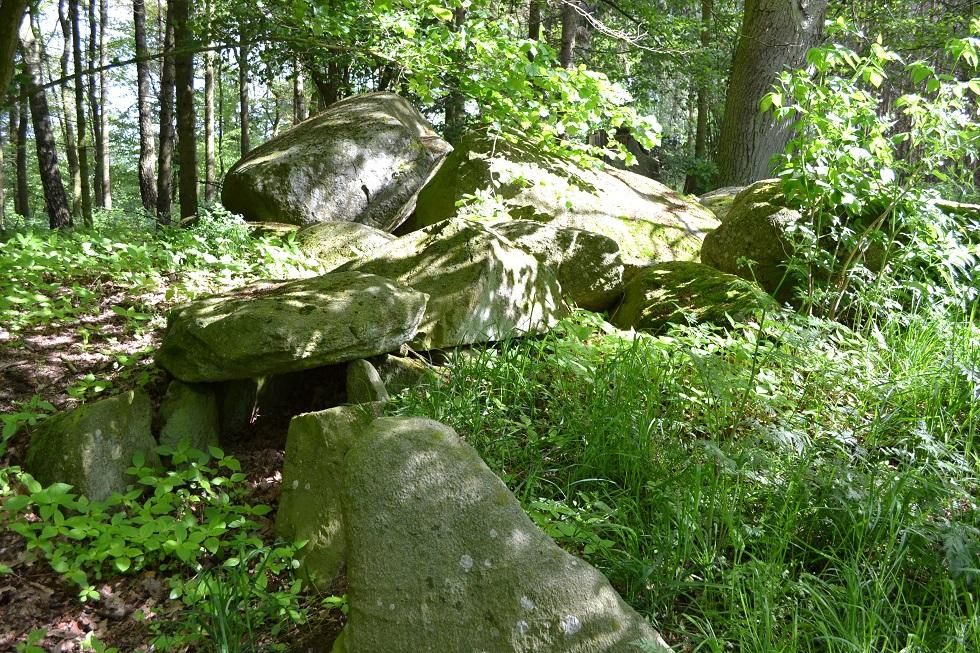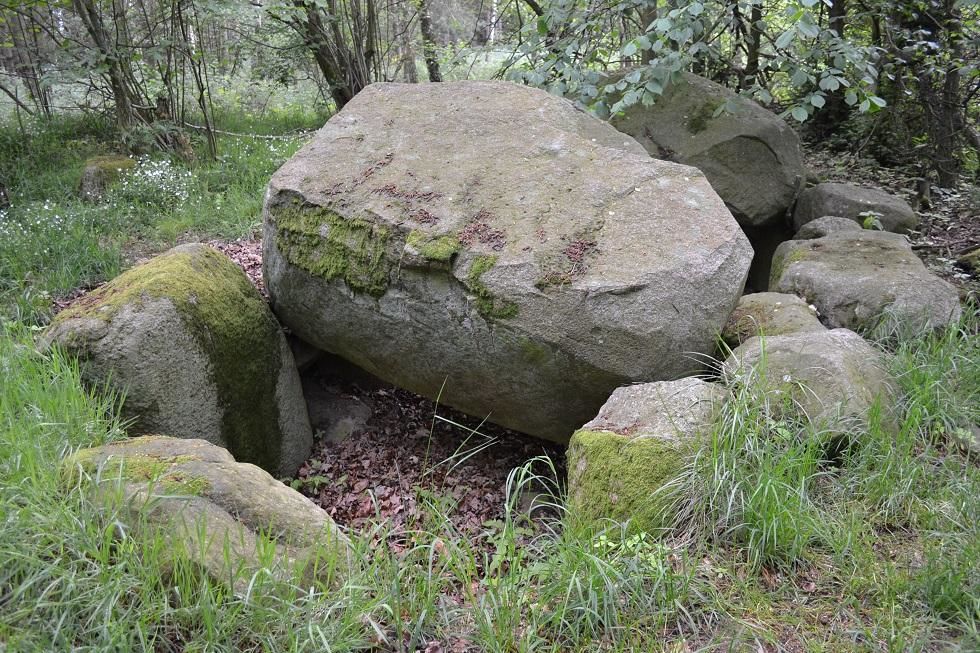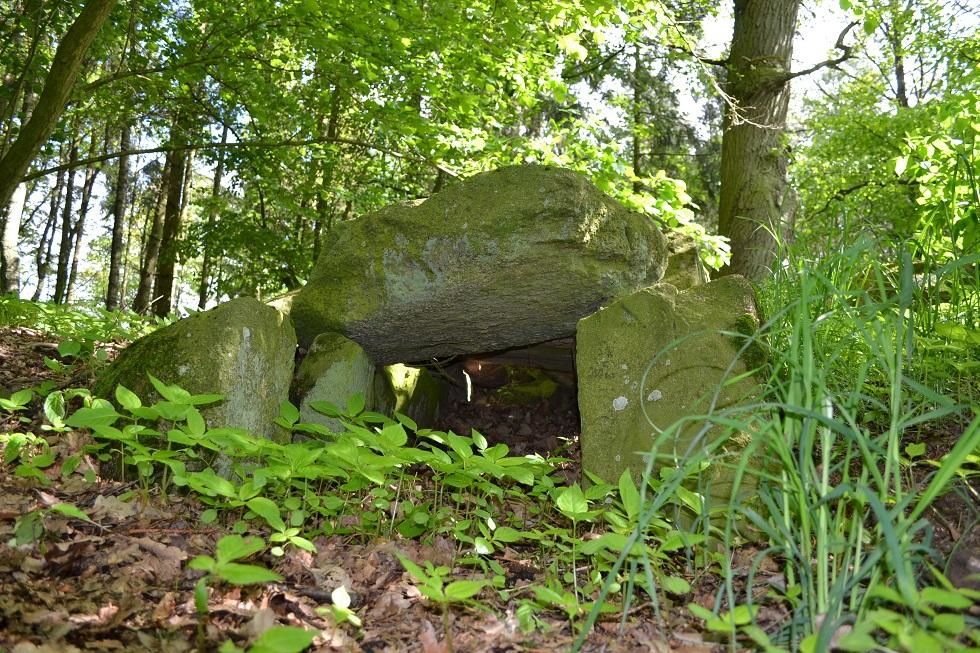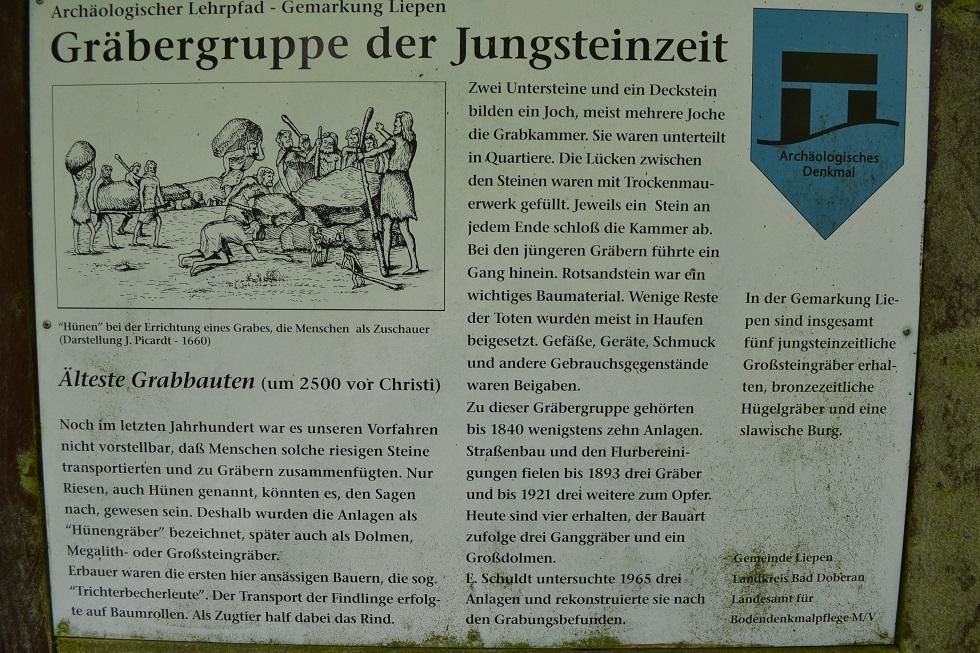Liepen megalithic tombs
The megalithic tombs on the Recknitz River near Liepen are among the best preserved structures from the late Neolithic period (3500 - 2800 BCE). They are therefore the oldest evidence of human architecture in this region. During excavations in the 1960s, vessels, blades, arrowheads, but also amber beads have been found.
Around Liepen about 10 megalithic tombs are documented. The most accessible and also the most worth seeing are two complexes near the Recknitz, which can be seen - coming from Liepen - shortly before the Recknitz following a path at the edge of the forest after about 200 m on the right side in the forest. Both sites are passage graves and thus the largest grave form in the megalithic construction. They were built between 3500 and 2800 B.C. in the time of the Funnel Beaker Culture, a name that goes back to the shape of the ceramic vessels used at that time. The graves are about 6 meters long and three or two of the four capstones are still in their original position.
In one of the two graves alone, in addition to charcoal, human bones (including four skulls) and 79 sherds, there are further 52 blades, 40 crosscutters, six amber beads, five blade scrapers, five scrapers, four striking stones, three narrow chiselsel, three double conical vessels, two shoulder vessels, two wide-mouthed vessels, two drills, one sandstone slice, one flat axe, one gouge, one funnel bowl, and one barrel-shaped vessel were found.
At the large stone graves there are explanatory panels on the origin of the structures and on the way of life of the first farmers and cattle breeders who settled here.



